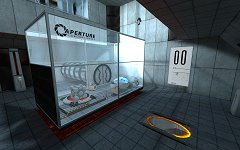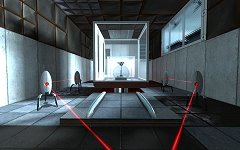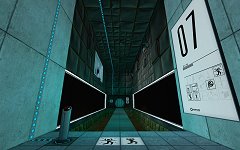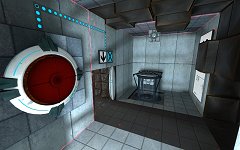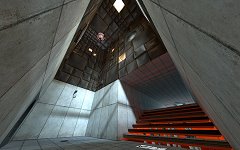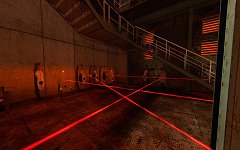Portal: Prelude
- Category: Previews
- Published on Monday, 15 September 2008 13:42
- Written by Nasirul Huq
- Hits: 5895

Never heard about this, huh ? Yes of course, and this is exactly the point. You never heard about it because it was developed in the dark, and kept secret until almost fully finished and polished. Portal: Prelude, as its name states it, is an unofficial prequel to the game Portal.
Remember kids, it's not just a map-pack, it's a whole new story.
Missed the cake last time! Try for Pizza this time.

The Story
Its story revolves around the pre-GlaDOS epoch, even before she was plugged in. At this time, test subjects were monitored by real Aperture Science employees, whose work was tedious, lengthy and repetitive. This is why they decided to build a great artificial intelligence that could both replace them in these difficult tasks, and also take responsibility for many other tasks within the complex and compete with Black Mesa's superiority. All employees of the Aperture Science complex are now eagerly awaiting GlaDOS. Maybe even a little too eagerly, as the upcoming events will tell...
Preview
Screenshots
Steam's Response
Even we were worried about the fact that Steam, the owner of Portal, can start a legal battle to stop the project and nasty things may happen.
But Nicolas "NykO18" Grevet, creator of the Mod, informed us about the Steam's response -
Yesterday, we got our first contact with the french community manager of Valve. Yes, Valve. The marvellous company that brought Portal and so much more to us for years. Don't take me wrong, I'm not trying to seduce anyone, but believe me, it was huge. I was so happy and so scared at the same time. For your information, they don't seem to bother about us doing a prequel for Portal. They're even sending us their congratulations and they seem to enjoy what we're doing. So, please guys, stop saying everywhere that Valve is going to murder us, or something.
Requirements
Though this is a free game but it is based on the original Portal which is not free.
In order to play Portal: Prelude you need to have Steam installed on your system, of course. You also need to be the owner of Portal and probably either Half-Life 2, Counter-Strike Source, Day of Defeat Source or the Source SDK Base (which can be downloaded for free in the tools tab of Steam). In fact, I'm not really sure you need anything else than Portal, so I advise you to try and see, because there's no way I'm going to uninstall every Source game of my computer until it doesn't work anymore. Steam will notify you if something goes wrong...
Recommended PC configuration :
- Processor: Intel Pentium 4 3000 MHz
- Display Card: DirectX 9 compatible graphics card
- Memory: 1024MB
- Free Disk Space: ~1GB
- Operating System: Microsoft Windows 2000/XP/Vista
This game is totally free and set to be released somewhere around the mid of October 2008, most likely on October 10th, the 1st anniversary of the famous Orange Box release.
It offers more game-play hours than the original Portal, with 8 chapters, 48 challenges, 6 advanced maps, a brand new storyline and more than 400 lines of speech with English and french subtitles.
Lets go back to the Aperture Science Laboratories 
Download Exclusive

